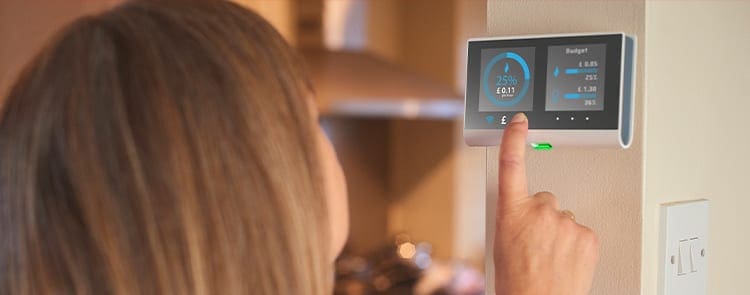Blogs
A Guide to Thermostats
12/4/2015

Thermostats are finely tuned sensing devices. It doesn’t matter if you’re using a smart thermostat or a thermostat from the 1950s, it still has to convert a physical measurement, temperature, into an electrical control signal. Mercury switches, coiled springs, and bimetallic switches are all viable methods of measuring the current temperature. As a room warms or cools, these metals expand and contract, respectively. When you set a thermostat, you’re physically placing the point at which an expanding strip of metal will make contact with that switch closing a circuit and sending an “ON” signal to your central unit.
On the other hand, electrical thermostats work differently. They include a suite of electrical sensors which generate or dampen electrical signals based on weather conditions. A microcomputer interprets the signals from the sensors and then sends a control signal to the unit for finer control based on current time, temperature, and humidity for more accurate climate control.
Type of Climate Control System
Thermostats are designed to operate different kinds of heating and cooling units. While there are many different styles, types, and makes of HVACs and furnaces, they can be broken up into three simple categories:
- Single-Stage
- Multi-Stage
- Heat Pumps
The differences here are in how the systems operate.
Single-Stage
A single-stage unit needs what is roughly an “ON/OFF” signal, while multi-stage systems have a more relative switch. The difference is in the design. Single-stage heating and cooling units have only two states, on and off. When active, they run at full intensity. This is why setting your thermostat past where you want to the actual temperature will not actually heat or cool your home any faster.
Multi-Stage
Multi-stage units improve on energy efficiency because of their operating cycles. Initial startup, heavy fuel burns, and high RPMs on fan motors all use a large amount of energy for operation. Multi-stage systems reduce this cost by using finer controls. Emergency heating and full power cooling are only triggered at large differences in temperature adjustment (the first time you turn the heat on for example). Balances to keep temperature regulated are made with longer run-times at lower intensities. This improves efficiency but requires a thermostat capable of sending more than just a simple “turn on” signal.
Heat Pumps
Then, of course, there are reversible heat pumps. These double-duty heating and cooling units come in variants of single-stage and multi-stage systems. If you’re using a heat pump for heating and cooling your home, make sure that you have a thermostat designed to work with the system. Features such as emergency heating won’t work properly otherwise.
Service Legends Heating and Cooling has a team of experts who know everything there is to know about heating, which means we’re the best experts for heating and cooling.
Thank you for making Service Legends the #1 provider of residential heating and air conditioning in the Des Moines area. A live and friendly customer care representative is ready to take your call 24/7 at 515-COMFORT (515.266.3678).
515-657-6634Request Appointment Online
Related Content
- No Heat? Self Diagnose Thermostat First
- How to Use a Programmable Thermostat for Max Savings
- Should You Set Your Thermostat Fan to Auto?
- January 2024
- October 2023
- September 2023
- August 2023
- January 2023
- December 2022
- November 2022
- October 2022
- September 2022
- August 2022
- July 2022
- June 2022
- May 2022
- April 2022
- March 2022
- February 2022
- January 2022
- May 2021
- November 2020
- October 2020
- September 2020
- July 2020
- June 2020
- May 2020
- March 2020
- February 2020
- December 2019
- November 2019
- September 2019
- May 2019
- April 2019
- January 2019
- December 2018
- November 2018
- October 2018
- July 2018
- October 2016
- September 2016
- August 2016
- July 2016
- June 2016
- May 2016
- April 2016
- March 2016
- February 2016
- January 2016
- December 2015
- November 2015
- October 2015
- September 2015
- August 2015
- July 2015
- June 2015
- May 2015
- April 2015
- March 2015
- February 2015
- January 2015
- December 2014
- November 2014
- October 2014
- September 2014
- August 2014
- July 2014
- May 2014
- March 2014
- February 2014
- January 2014
- December 2013
- November 2013
- October 2013
- September 2013